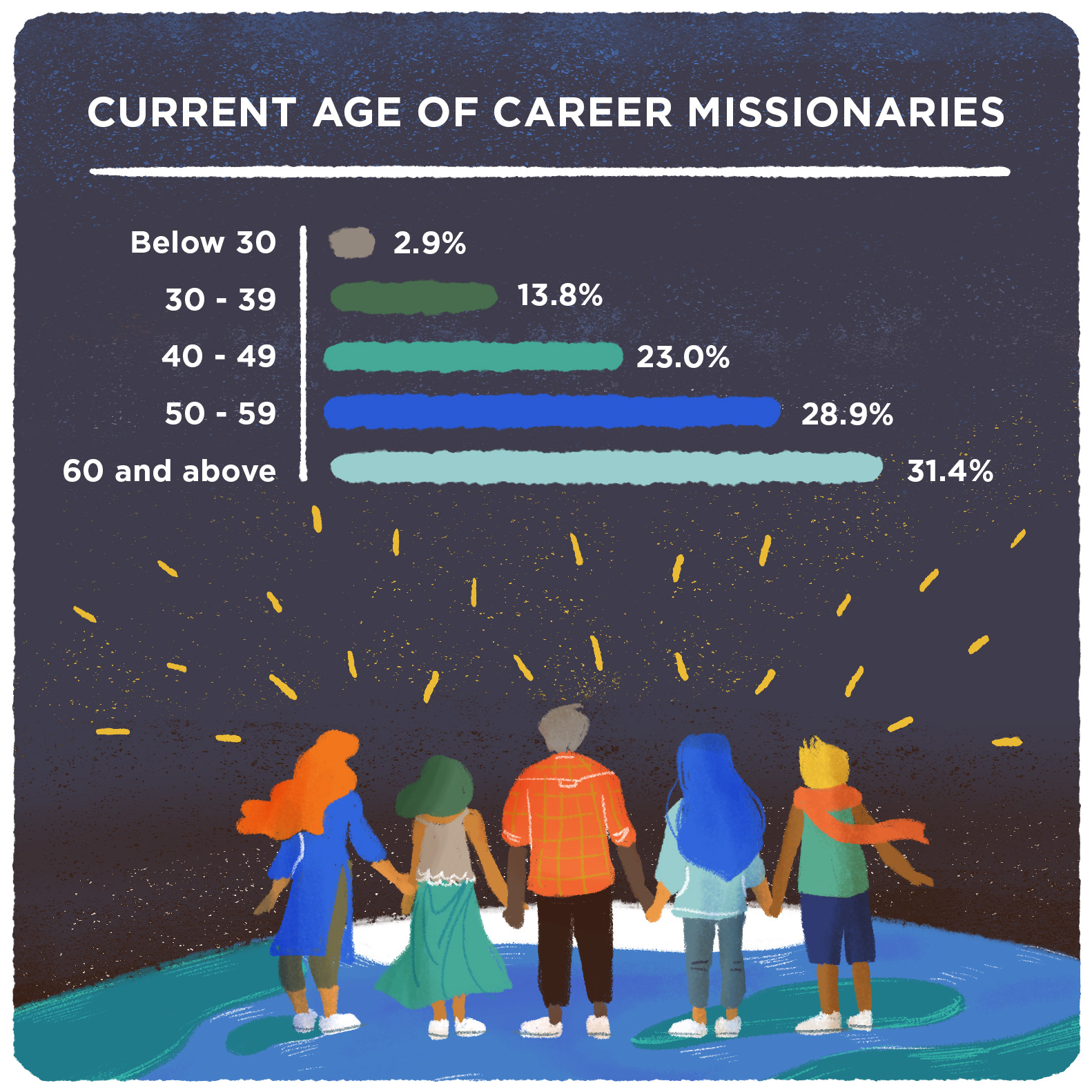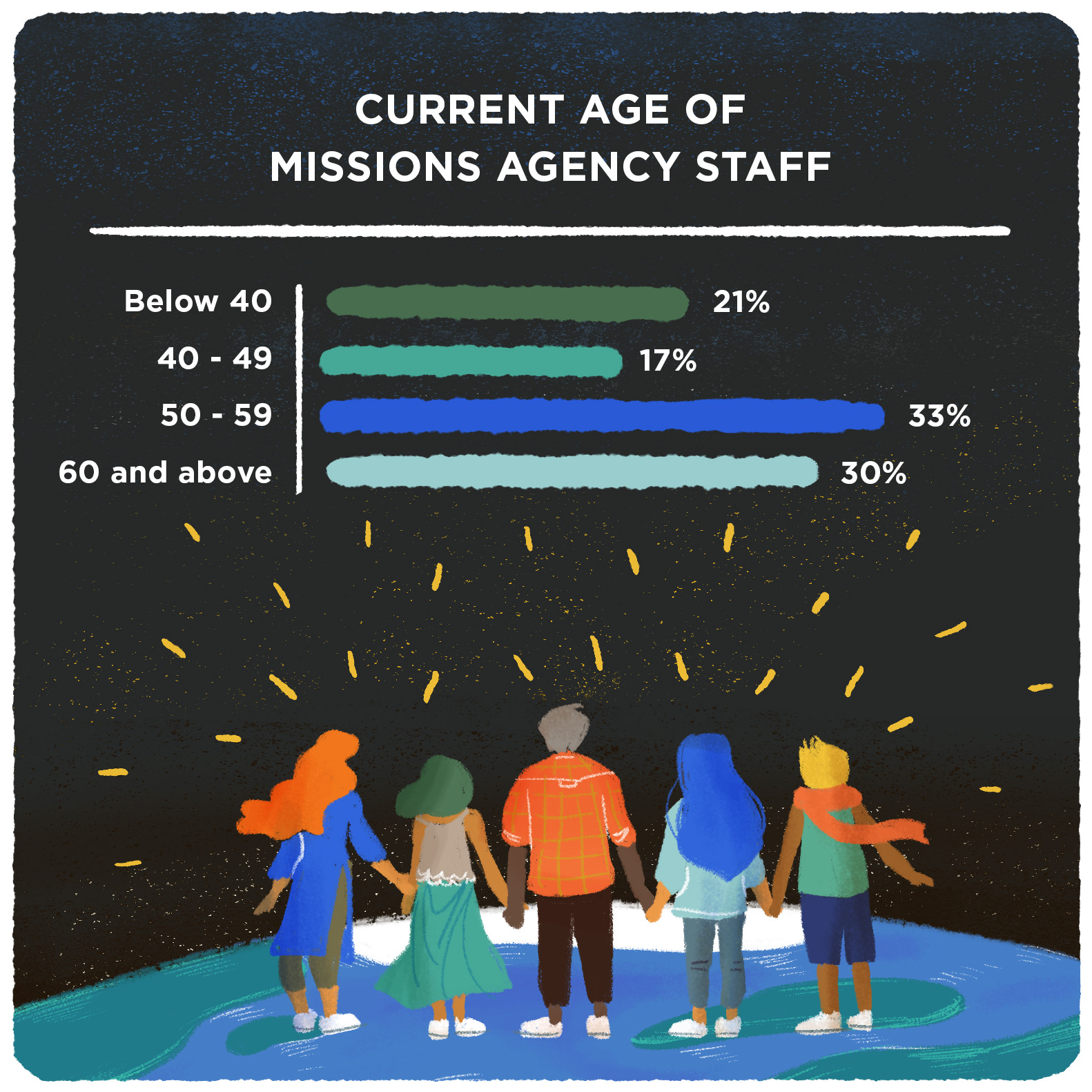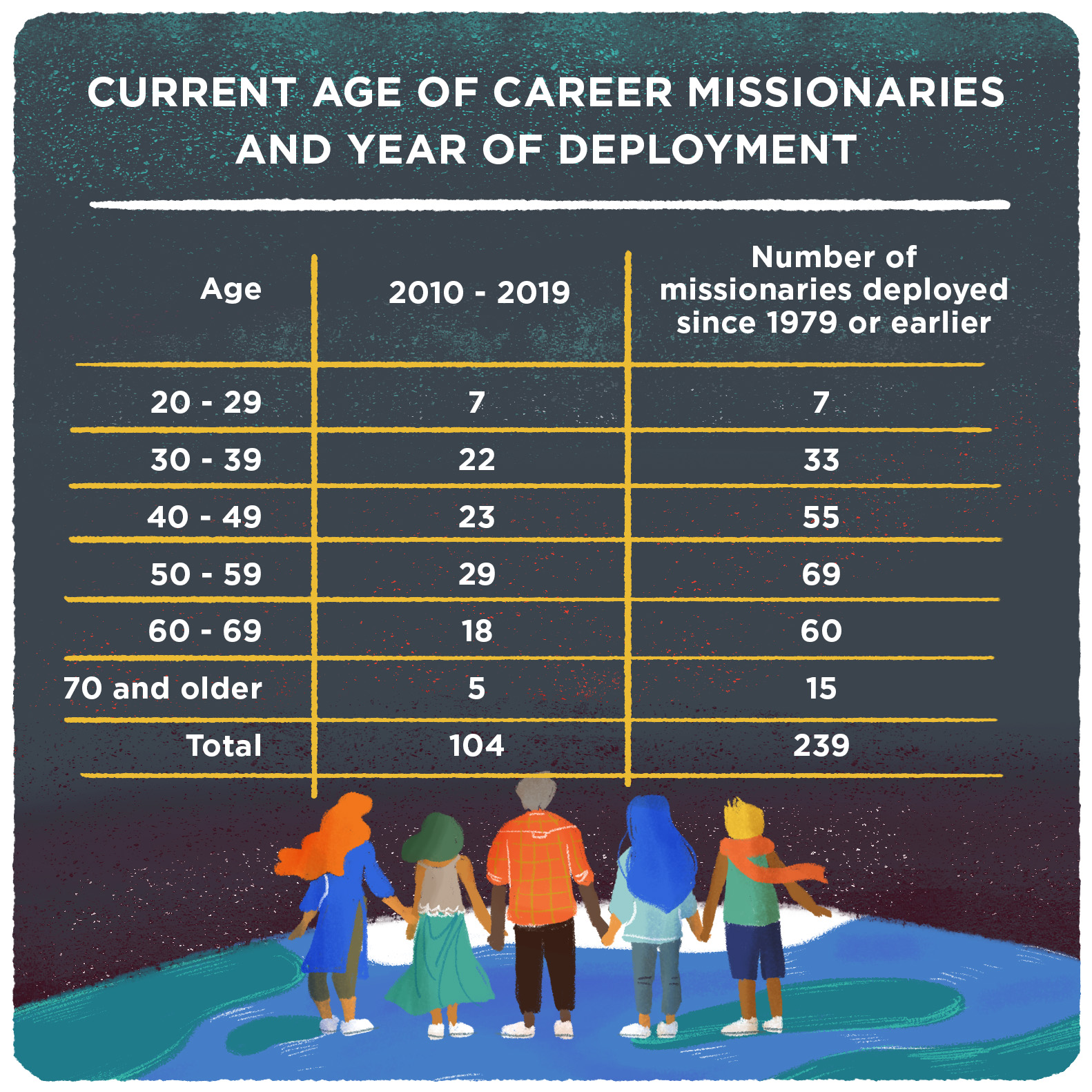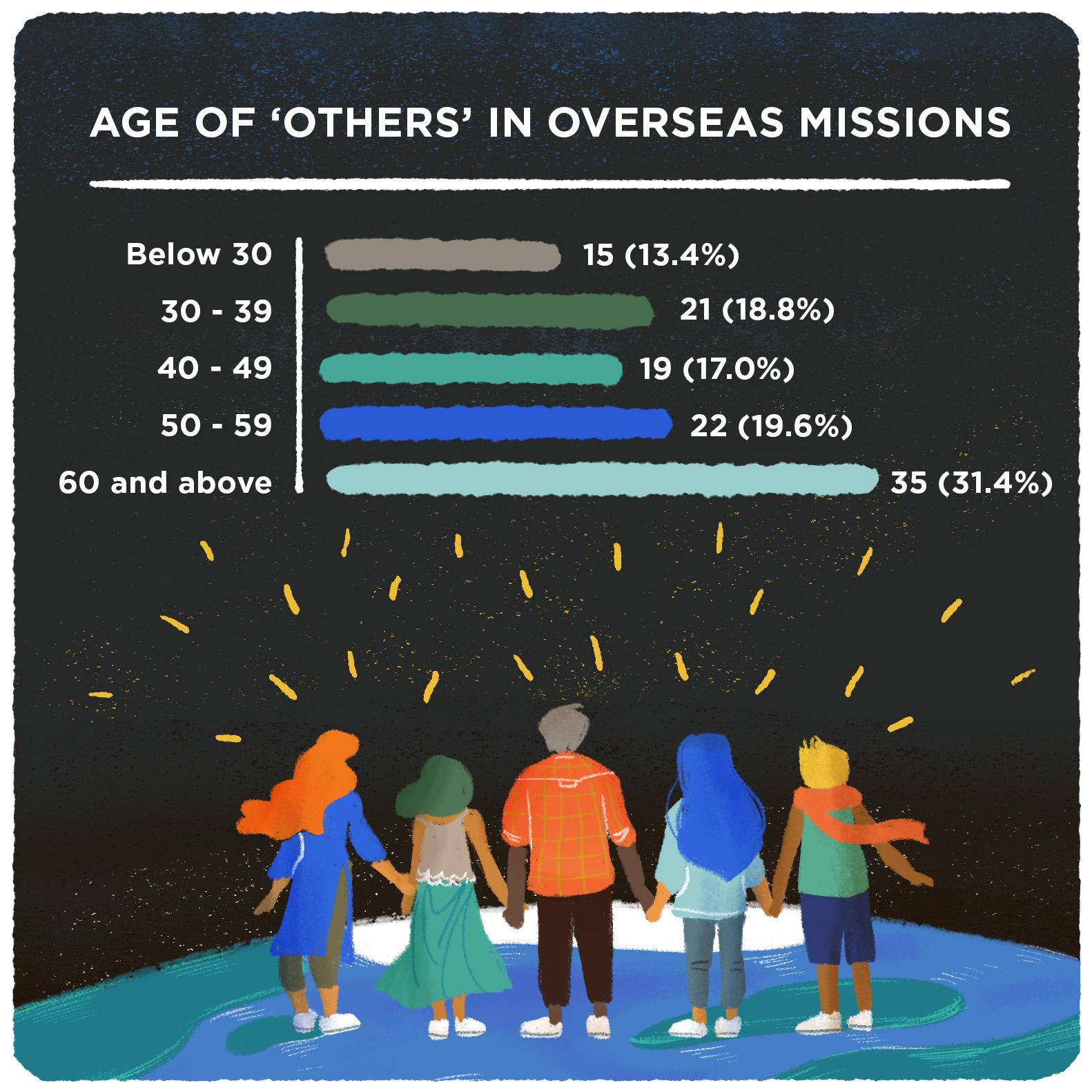What kind of missions work are local churches involved in? And how can the next generation participate in the changing missionary landscape? These are some of the questions that the National Missions Study (NMS) 2019 aimed to explore.
Conducted by Singapore Centre for Global Missions between April and October this year, the study was released last week. NMS 2019 saw 158 participating churches with a combined membership/attendance of 152,775, an encouraging increase from the 115 churches (115,000 members) who were surveyed five years ago in NMS 2014.
The report highlighted a few key observations that reflected a growing number of missionaries (from 816 to 1,161) in the missions force. However, it also showed an ageing trend.
THE MISSIONS FORCE HAS GROWN, BUT IT’S GREYING
The missions force comprises four broad categories of people: Career Missionaries, Missions Agency Staff, Missional Professionals and ‘Others’. Each represents the various ways churches and individuals participate in missions.
Defined as those who have been sent by a recognised church or mission agency, and served outside Singapore full-time as a career missionary for at least two years, only 2.9% of Career Missionaries were below 30 years old – the majority of Career Missionaries (60.3%) were aged 50 and above.

A similar pattern is seen across other missions force categories – 21% of Missions Agency Staff are aged under 40, while most (63%) are aged 50 and above.
Missions Agency Staff refers to people who have worked full-time for at least two years in a denominational missions agency, recognised multinational missions agency or research centre based in or out of Singapore.

The report also showed that among the currently deployed career missionaries, only 17% (40) are under 40 years old and 60% (144 missionaries) are aged 50 and above.
In fact, over the last 10 years (2010-2019), half of the deployed missionaries are in their 50s and older (52), while less than 30% (29) are under the age of 40.

It appears then that few young people are involved in missions full-time.
So the question is: Where are the youth missionaries and what roles are they playing in the missions force? One clue could be in the ‘Others’ category.
The ‘Others’ consists of people who are involved in missions on a regular basis for at least two years (e.g. itinerant evangelists, pastors who travel regularly to do missions work and those dedicated to missions at our doorstep), but excludes short-term mission trippers.
NMS 2019 noted that for every Career Missionary under the age of 40 (40), there is about one ‘Others’ missionary (36).

It was also stated that this number doubled when doorstep missions (reaching out to members of the international community in Singapore) were taken into consideration.
This suggests that while the next generation is not going out as full-time Career Missionaries, those under 30 years old have engaged in missions through other ways.
RISE OF THE ‘OTHERS’
Reflecting on the results, Ng Su-Ling, Associate International Director of OM International, shared: “These numbers do not necessarily mean less engagement in missions but rather different forms of engagement in missions.”
Exhorting missions agencies to pay attention to these trends, she said: “What would it look like as a mission agency to equip, inspire and collaborate with the global Church without necessarily requiring people to join us?”
Caleb Leong, a 25-year-old ‘Other’ missioner from Petra Church, added that the younger generation finds relevance in missions within the context of technological changes and evolving business models. The 25-year-old assists with cross-cultural revival and the equipping of pastors and marketplace leaders under FrontierWorks.
He shared: “While the next generation is passionate about missions, it’s taking a lot more different forms because of new technologies and platforms available today.”
https://thirst.sg/full-time-under-30-missions-solvenplusone/
Indeed there may well be other forms of missions work that the youth are moving towards.
Based on observations of what churches, especially megachurches, were doing, the latest NMS report expanded its scope to cover short-term mission trips as well as mid-term missionaries that weren’t previously recorded in NMS 2014.
Short-term mission trips are defined as overseas trips commissioned by churches, lasting up to one month and having any number of persons. Mid-termers are missionaries who are deployed overseas for between 1 month and 2 years.
Under missions at our doorstep, NMS 2019 also noted that migrant worker befriending and outreach was now present in 37% of ministries, whereas migrant worker ministry was scarcely on the list in NMS 2014.
ARE WE REACHING THE ENDS OF THE EARTH?
However, the data still reflects a lack in specific areas of ministry, in particular towards unreached people groups (UPGs).
It was recorded that only 50 churches (32%) out of the 158 churches that participated in the NMS 2019 report had been involved in at least one UPG work. This is less than the 36.5% reported for NMS 2014.
Revealing an overall growing lack of take-up with UPG work, more than 60% of churches were not engaged in UPG work.
“If it is indeed the case that much missions work is in maturing fields, the Church in Singapore must not lose sight of the remaining task of world evangelisation to the unreached (or at least reached) peoples,” said the report.
OM’s Ng couldn’t help but wonder if we have lost the theology of suffering.
She said: “How can we help our younger generation in particular comprehend that suffering and persecution is part and parcel of the call to missions, as was reflected in the model of the early church? How might we reframe our mission policies if we understood that embracing risks is part of the commitment to go to the unreached?”
Let us continue to align ourselves with God’s heart for the world in the ways we approach missions, recognising the importance of meeting the needs of others as well as bringing the Gospel to the ends of the earth. Let us not be afraid of pioneering new paths into unmarked territories as well as to see the value of what we as young people in Singapore can bring to missions work.









